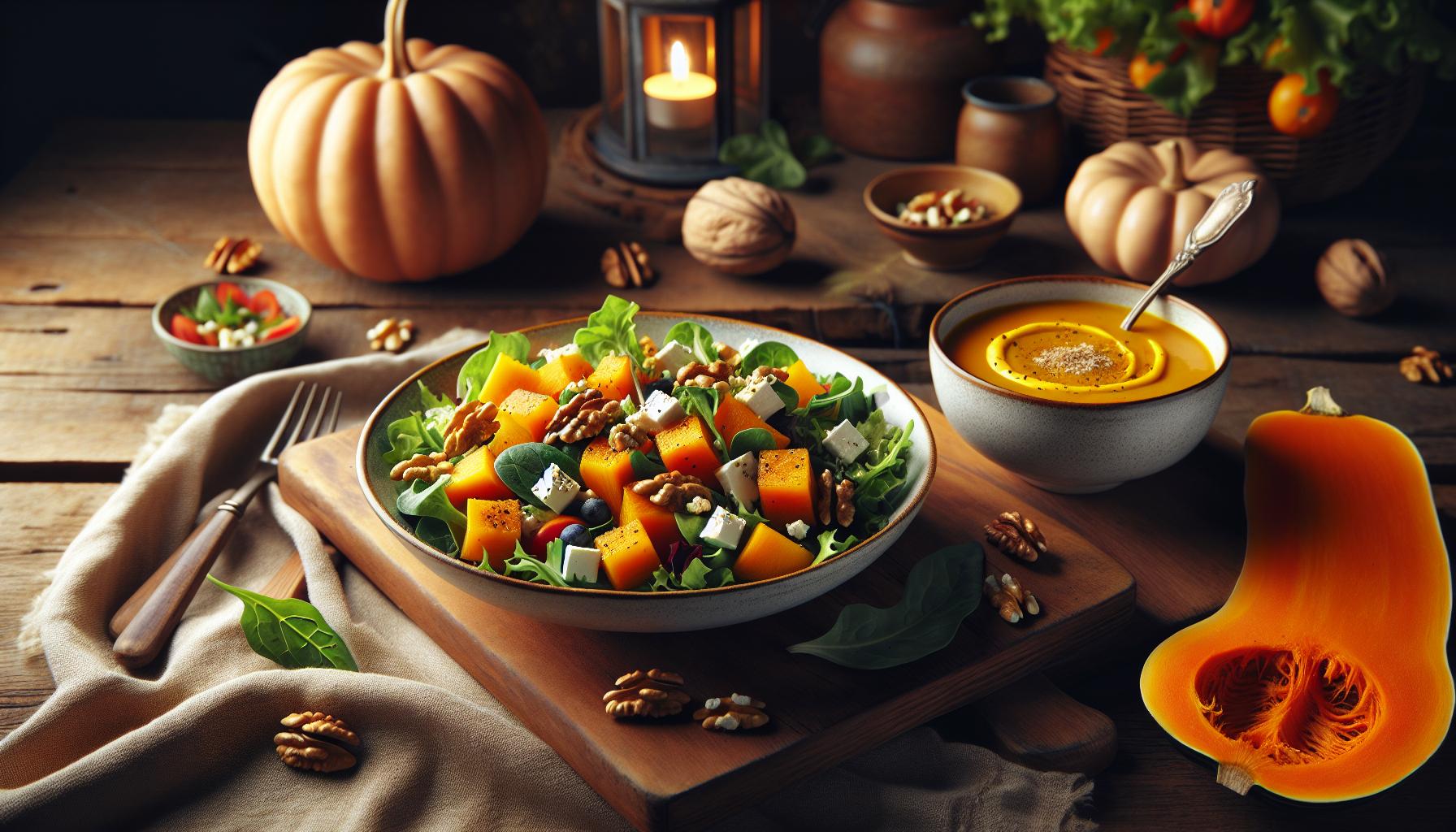Butternut squash is one of my favorite fall ingredients. Its sweet, nutty flavor and creamy texture make it a versatile addition to countless dishes. Packed with vitamins A and C, fiber, and antioxidants, it’s not just delicious but also a powerhouse of nutrition. Whether you’re roasting it for a simple side dish or blending it into a comforting soup, butternut squash can elevate your meals while keeping them healthy.
In this article, I’ll share some of my go-to butternut squash recipes that are not only easy to prepare but also bursting with flavor. From hearty salads to satisfying mains, these dishes will bring warmth to your table. Let’s dive into the world of butternut squash and discover how it can transform your cooking while nourishing your body.
Key Takeaways
- Nutritional Powerhouse: Butternut squash is rich in vitamins A and C, fiber, and antioxidants, supporting overall health and immune function.
- Versatile Cooking Methods: Explore various cooking methods—baking, steaming, and grilling—to enhance the natural flavor and texture of butternut squash dishes.
- Delicious Recipes: Easy to prepare recipes like Roasted Butternut Squash Salad and Creamy Butternut Squash Soup provide wholesome meals that are both flavorful and healthy.
- Choosing Fresh Squash: Select medium-sized butternut squash with firm skin, and store it in a cool, dark place to extend its shelf life and maintain quality.
- Storage Tips: Cut or peeled squash should be refrigerated in an airtight container, while cooked squash can be frozen for up to six months for later use.
Nutritional Benefits of Butternut Squash
Butternut squash provides numerous nutritional benefits that contribute to a healthy diet. Packed with vitamins, minerals, antioxidants, and fiber, it stands out as a nutritious addition to various recipes.
Vitamins and Minerals
Butternut squash offers a rich source of vitamins. It contains high levels of vitamin A, providing over 400% of the recommended daily intake in one cup. This vitamin supports eye health and boosts the immune system. Also notable, vitamin C helps with collagen production and skin health. Essential minerals like potassium and magnesium enhance heart health and promote healthy bone density.
Antioxidants and Fiber
Antioxidants in butternut squash, such as beta-carotene and vitamin E, protect cells from oxidative damage and reduce inflammation. This squash also supplies dietary fiber, with one cup containing approximately 7 grams. Fiber aids in digestion, maintains healthy blood sugar levels, and promotes a feeling of fullness, which is beneficial for weight management.
Delicious Butternut Squash Healthy Recipes

Here are two delicious recipes that highlight butternut squash’s unique flavor while keeping health in mind.
Roasted Butternut Squash Salad
Roasted butternut squash salad combines nutritious greens with the sweetness of roasted squash. Start by peeling and cubing 2 cups of butternut squash, then toss the cubes with 2 tablespoons of olive oil, salt, and pepper. Roast at 400°F (204°C) for 25-30 minutes or until tender.
While the squash roasts, prepare 4 cups of mixed greens, such as arugula and spinach. Once the squash cools, mix it into the greens. For added flavor, drizzle with balsamic vinaigrette and sprinkle with ¼ cup of feta cheese and ¼ cup of walnuts. This salad offers a healthy serving of vitamins A and C, fiber, and healthy fats.
Creamy Butternut Squash Soup
Creamy butternut squash soup serves as a comforting, nutritious dish. Begin with 2 tablespoons of olive oil in a large pot, heating over medium heat. Sauté 1 diced onion and 2 minced garlic cloves for 5 minutes until fragrant. Add 4 cups of peeled and cubed butternut squash and 4 cups of vegetable broth.
Bring the mixture to a boil, then reduce the heat and simmer for 20 minutes or until the squash is tender. Use an immersion blender to puree the soup until smooth. Stir in ½ cup of coconut milk, and season with salt, pepper, and a pinch of nutmeg. This soup is rich in vitamins A and C, providing a cozy, healthy option for any meal.
Creative Cooking Methods

Exploring creative cooking methods adds variety to butternut squash dishes. Here are ways to prepare this nutritious vegetable that enhance its natural flavors.
Baking vs. Steaming
Baking brings out butternut squash’s sweetness. I often slice it into cubes, toss them with olive oil, salt, and pepper, and bake at 400°F for 25-30 minutes until tender. The caramelization enhances its flavor.
Steaming retains more nutrients. Using a steamer basket, I steam whole halves or cubes for about 10-15 minutes until soft. This method maintains the squash’s vibrant color and provides a moist texture ideal for purees or soups.
Grilling Techniques
Grilling adds a smoky depth to butternut squash. I typically slice the squash into thick rounds, brush with olive oil, and season with herbs before placing them on the grill for 8-10 minutes per side.
Grilling enhances the flavor and provides attractive grill marks that make dishes visually appealing. Using skewers to create kabobs with other vegetables is another great grilling option, perfect for summer barbecues.
Tips for Choosing and Storing Butternut Squash

Choosing and storing butternut squash properly enhances its flavor and longevity. Following these tips helps maintain quality until you’re ready to enjoy this nutritious ingredient.
Selecting Fresh Squash
- Look for medium-sized butternut squash, typically weighing 2 to 3 pounds. This size balances taste and texture.
- Check the skin; it should be firm and free from soft spots or blemishes. A smooth, matte finish indicates ripeness.
- Examine the color; deep, even tan suggests maturity, while pale or green patches may indicate under-ripeness.
- Inspect the stem; it should be dry and intact. A moist stem can lead to faster deterioration.
- Store whole butternut squash in a cool, dark place, such as a pantry or basement, where temperatures range from 50°F to 60°F.
- Keep the squash away from sunlight and humidity to prevent spoilage.
- Refrigerate cut or peeled squash in an airtight container, where it can last for about 5 to 7 days.
- Consider freezing cooked squash for up to 6 months. Just purée or cube the squash, then store it in freezer-safe bags or containers.
Butternut squash is truly a gem in the kitchen. Its versatility allows for a variety of delicious and healthy recipes that can elevate any meal. I’ve shared my favorite ways to enjoy this nutrient-packed ingredient while keeping flavor at the forefront.
Whether it’s a vibrant salad or a comforting soup there’s something for everyone to savor. I encourage you to experiment with butternut squash in your cooking. You’ll not only enjoy its rich taste but also reap the numerous health benefits it offers. Embrace this seasonal favorite and let it inspire your next culinary adventure.



